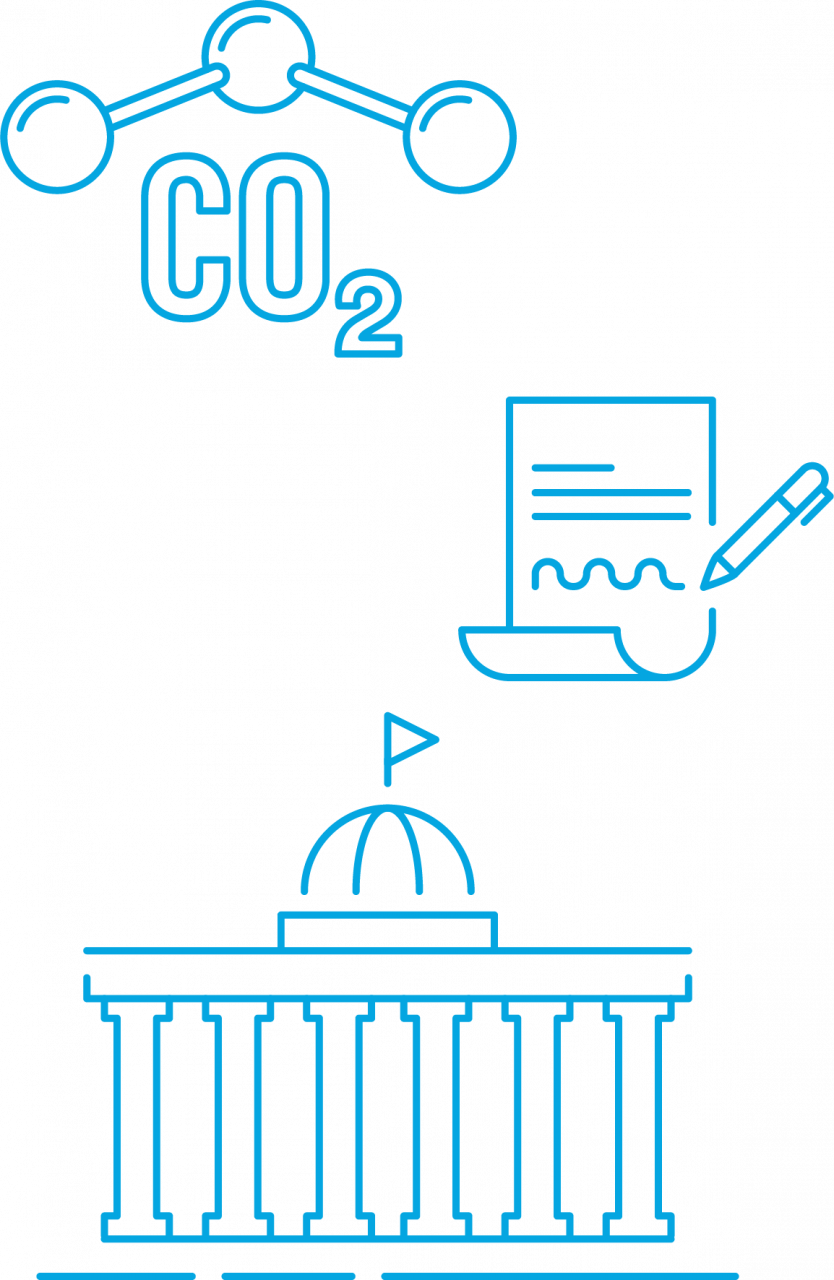Resources

In order for the United States to remain a global leader in carbon capture and to achieve economy-wide deployment of these important technologies, a broad suite of policies is needed.
Below are resources to inform you about the current state and federal policy landscape for carbon capture, utilization, removal, and storage projects. This includes:
- Policy Best Practices Checklist to help you build robust legislation based on the unique characteristics of your state
- Federal Policy Blueprint outlining what other policies are needed at the national level to help ensure economy-wide deployment of carbon capture.
You can find state-level fact sheets for Regional Carbon Capture Deployment Initiative participants on our Regions page. These fact sheets include information about industrial facilities that may qualify for the federal 45Q tax credit for carbon capture projects, including the type of facility, emission reduction potential, the state’s current legislative landscape, and more.

Federal Policy Blueprint
The 2025 Federal Policy Blueprint is the Carbon Capture Coalition’s foundational, consensus-based document that serves as a guidepost for Coalition policy priorities to achieve the goal of nationwide carbon management technology deployment. Updated at the beginning of each new Congress, the Blueprint reflects the Coalition’s legislative, regulatory, and implementation priorities for that Congress and the administration. The 2025 Blueprint outlines the policy framework necessary to realize widespread adoption and deployment of carbon capture, removal, and utilization technologies and associated development of CO₂ transport and storage infrastructure.
Prior Coalition Blueprints and efforts have helped lay the groundwork for the introduction and enactment of the current federal policy framework for carbon management technologies. This includes, but is not limited to, enhancements to the landmark Section 45Q tax credit enacted in 2022, and groundbreaking funding for demonstration and deployment through the Infrastructure Investment and Jobs Act of 2021.
You can view past editions of the Federal Policy Blueprint here.
Policy Best Practices
State policies have an important role to play in complementing federal policy to help carbon capture projects cover cost gaps and achieve financial feasibility.
The checklist below describes state policy options and best practices that can positively affect state economies by capturing carbon from industrial and power plant sources, putting the carbon to beneficial use, or permanently storing it in geologic formations or through enhanced oil recovery.
State policies and incentives are needed that provide investment certainty, spur technology deployment and provide cost reductions, enhance project finance and feasibility, and encourage infrastructure deployment.
State Carbon Capture Work Group
The State Carbon Management Work Group (previously the State Carbon Capture Work Group) produced a comprehensive paper outlining state and federal policy recommendations in 2016. The group subsequently developed white papers on specific topics related to carbon capture.
- 21st Century Energy Infrastructure: Policy Recommendations for Development of American CO2 Pipeline Networks
- Electricity Market Design and Carbon Capture Technology: The Opportunities and the Challenges
- Capturing and Utilizing CO2 from Ethanol: Adding Economic Value and Jobs to Rural Economies and Communities While Reducing Emissions
In 2021, the signatory states of the CO2 Transport Infrastructure Memorandum of Understanding (MOU) released a Regional Carbon Dioxide (CO2) Transport Infrastructure Action Plan which includes potential policies for states to consider to facilitate carbon dioxide (CO2) transport and storage project deployment.

